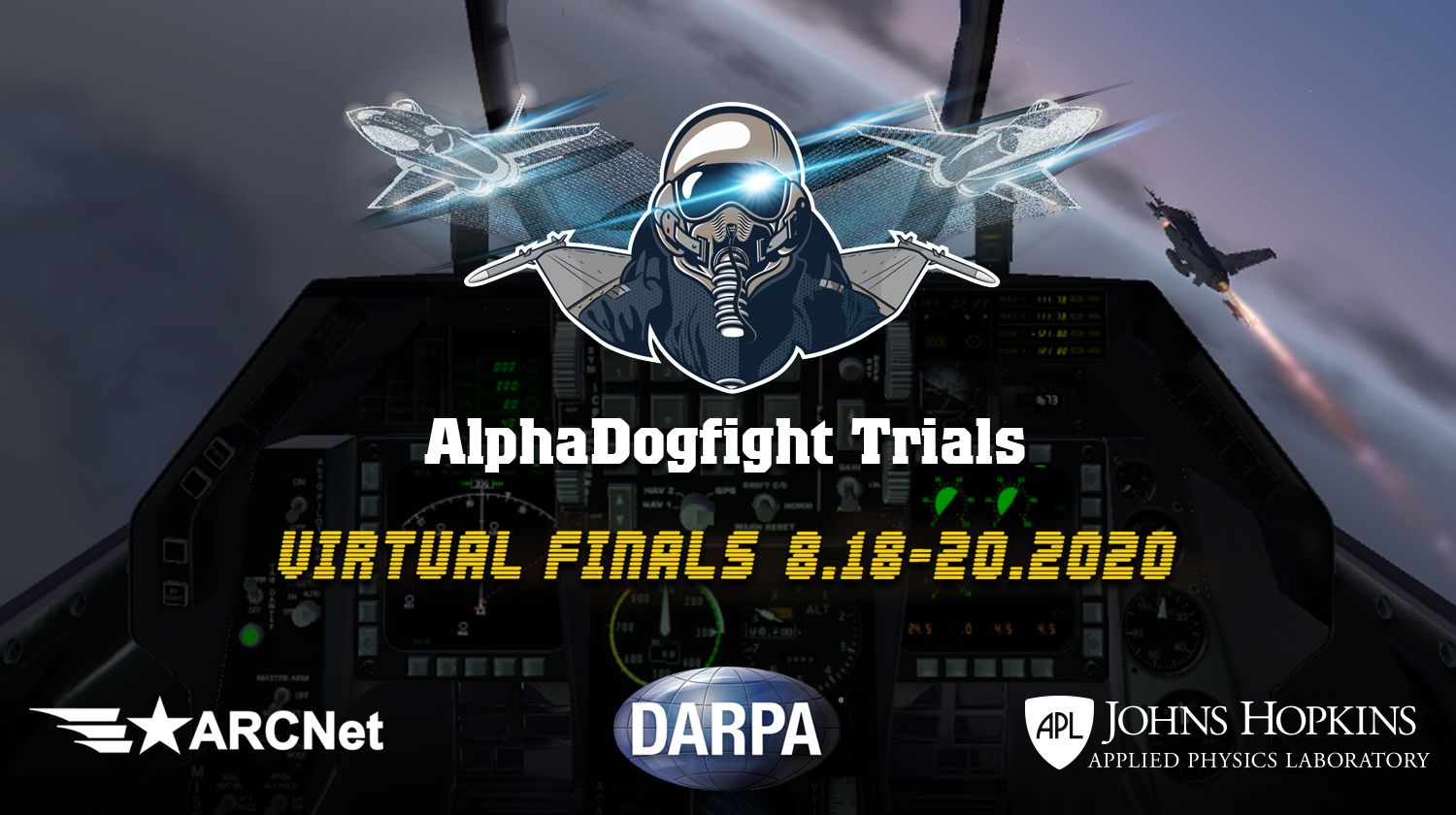
A small Maryland company took first place in last week’s AlphaDogfight Trials Final event, a three-day competition designed to demonstrate advanced algorithms capable of performing simulated, within-visual-range air combat maneuvering – commonly known as a dogfight.
Heron Systems’ F-16 AI agent defeated seven other companies’ F-16 AI agents and then went on to dominate the main event – a series of simulated dogfights against an experienced Air Force F-16 pilot – winning 5-0 through aggressive and precise maneuvers the human pilot couldn’t outmatch.
“The AlphaDogfight Trials were a phenomenal success, accomplishing exactly what we’d set out to do,” said Col. Dan “Animal” Javorsek, program manager in DARPA’s Strategic Technology Office.
“The goal was to earn the respect of a fighter pilot – and ultimately the broader fighter pilot community – by demonstrating that an AI agent can quickly and effectively learn basic fighter maneuvers and successfully employ them in a simulated dogfight.”
The trials were designed to energize and expand a base of AI developers for DARPA’s Air Combat Evolution (ACE) program. ACE seeks to automate air-to-air combat and build human trust in AI as a step toward improved human-machine teaming.
“During last week’s human versus machine exhibition the AI showed its amazing dogfighting skill consistently beating a human pilot in this limited environment,” Javorsek said.
“This was a crucible that lets us now begin teaming humans with machines, which is at the heart of the ACE program where we hope to demonstrate a collaborative relationship with an AI agent handling tactical tasks like dogfighting while the onboard pilot focuses on higher-level strategy as a battle manager supervising multiple airborne platforms.”
Eight participating companies – ranging from major defense contractors to a four-person firm – spent less than a year developing and teaching their AI agents how to fly and excel in simulated aerial combat.
The teams were Aurora Flight Sciences, EpiSys Science, Georgia Tech Research Institute, Heron Systems, Lockheed Martin, Perspecta Labs, PhysicsAI, and SoarTech. AI agents developed by Lockheed Martin, Aurora Flight Sciences, and PhysicsAI rounded out the top four teams.
“The AlphaDogfight Trials outcome shows great promise for future airborne combat systems and concepts involving human-machine symbiosis,” said Tim Grayson, director of DARPA’s Strategic Technology Office (STO).
“As part of STO’s Mosaic Warfare vision of distributed manned and unmanned systems, the trials laid a strong foundation for further algorithm development in the ACE program as it moves now from a simulation environment to testing algorithms and measuring pilot trust on actual aircraft.”
Due to the COVID pandemic, the third and final trial could not be held in person at AFWERX in Las Vegas as originally planned. Instead, the Johns Hopkins Applied Physics Laboratory (APL) in Laurel, Maryland, virtually hosted the finals August 18-20 and streamed the event live on ZoomGov and YouTube. APL hosted the first two trials in October 2019 and January 2020 in person.
Watch the August 20 semifinals and final match of the AI-agent competition followed by the champion AI agent versus human fighter pilot:
from Defense News by DefenceTalk.com https://ift.tt/2FVQmgs
via Defense News
 Reviewed by Unknown
on
05:16:00
Rating:
Reviewed by Unknown
on
05:16:00
Rating:
No comments: